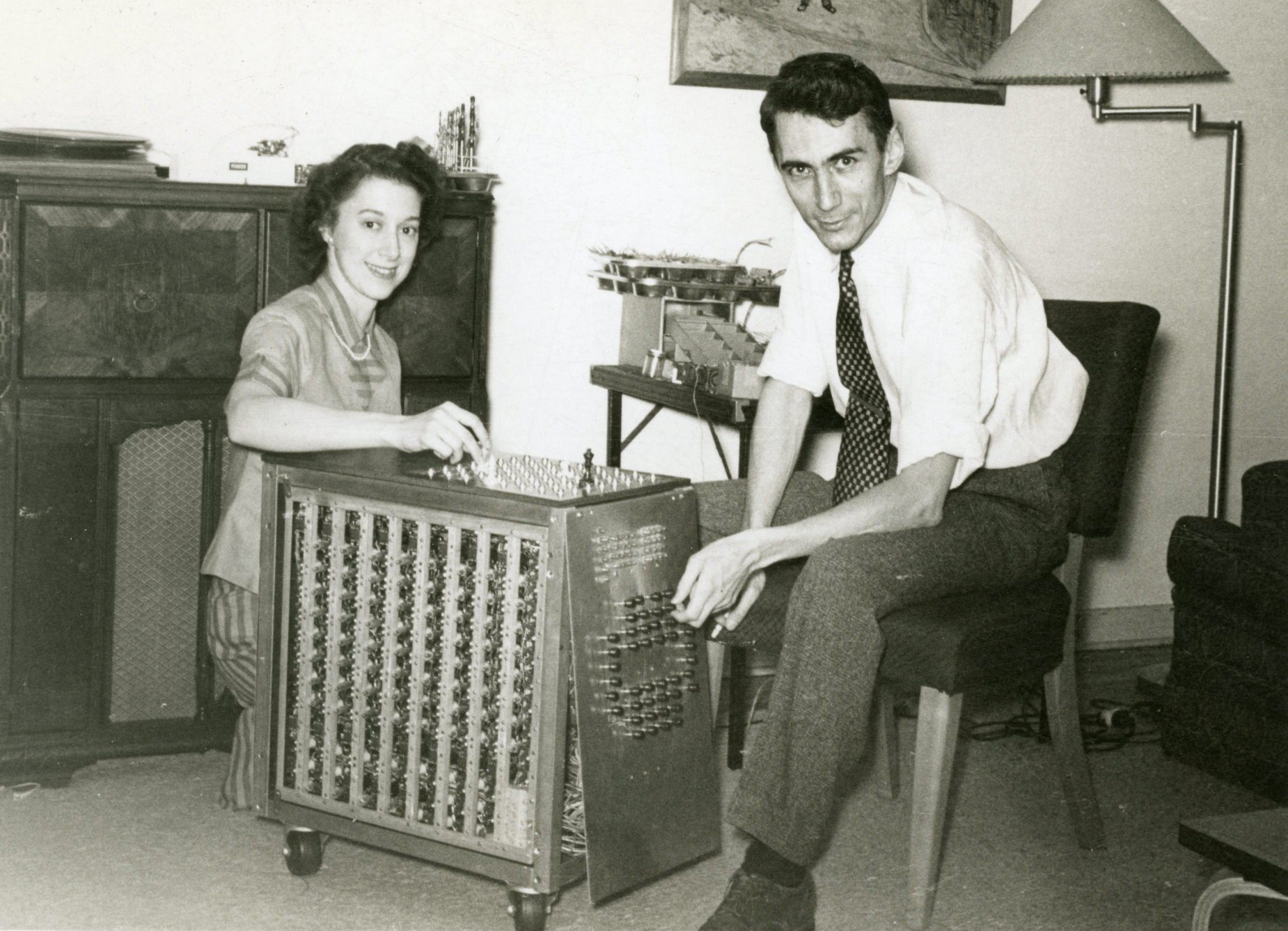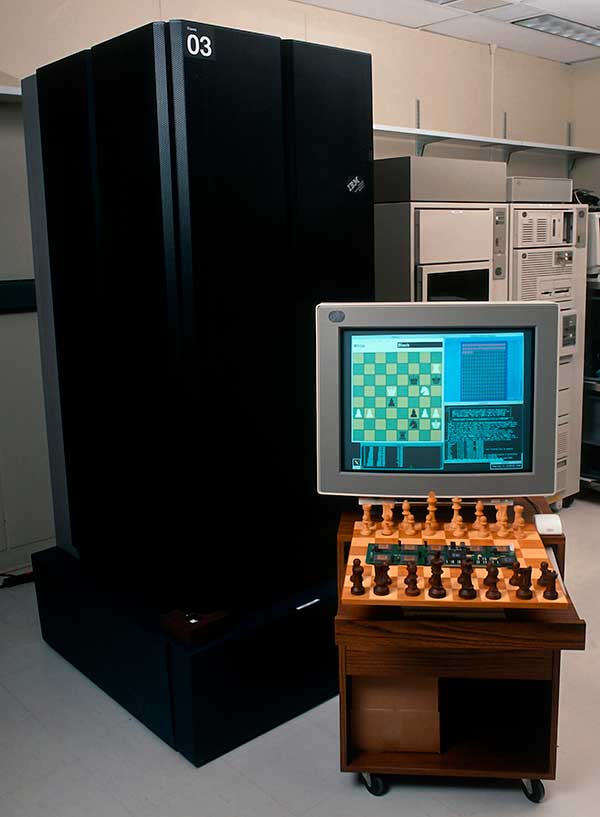"It is very difficult to estimate how well a computer can be made to play with ideal programming. I tend to agree that it would be very difficult to reach the caliber of world champions or even most chess masters but I do not regard this as unthinkable. The machines do have certain very strong advantages of accuracy, speed, etc., and our present techniques of programming are bound to improve enormously in the future."
- Claude Shannon
"Shannon's Numbered Chess Board." Scientific American. 1950.
In chess the two players communicate through a game. What if one of them was a computer? Shannon’s tinkering inspired his 1950 paper explaining how machines could communicate with humans through chess. Shannon explained that each space and different chess piece could be assigned a number which the computer could use to calculate a move.
Shannon knew that a chess machine would have flaws. Computers at the time only operated fast enough to predict two moves, while professional chess players envisioned up to fifteen moves ahead. Since the machine would act identically in the same scenario, one could win by replicating a previously won game. Shannon also believed that programming it to learn from its mistakes would be impractical given the technology within his access.
"Inevitable Advantage." Scientific American. 1950.

"Shannon's Chess Machine" Chess.com. No date.
"We had dreams. Turing and I used to talk about the possibility of simulating entirely the human brain, could we really get a computer which would be the equivalent of the human brain or even a lot better?"
- Claude Shannon
Shannon Loses to Grandmaster in Chess
"Chess game, Claude Shannon playing Soviet international grandmaster and three-time world champion, Mikhail Botvinnik." Chess.com. 1965.
IBM's Grandmaster-Defeating Chess Machine

Hemsey, Yvonne. "Deep Blue in IBM's headquarters in Armonk, N.Y." IEEE Spectrum. 1996.